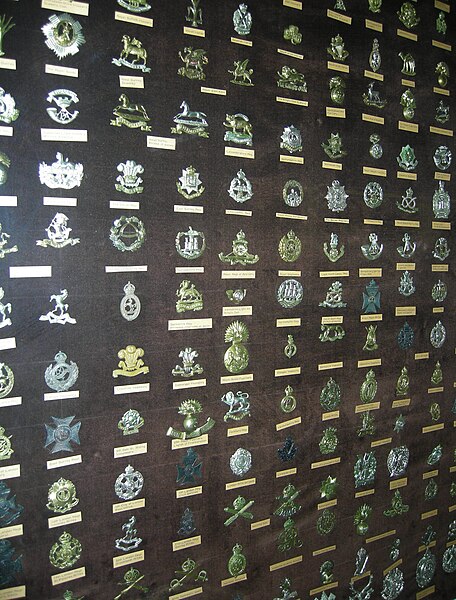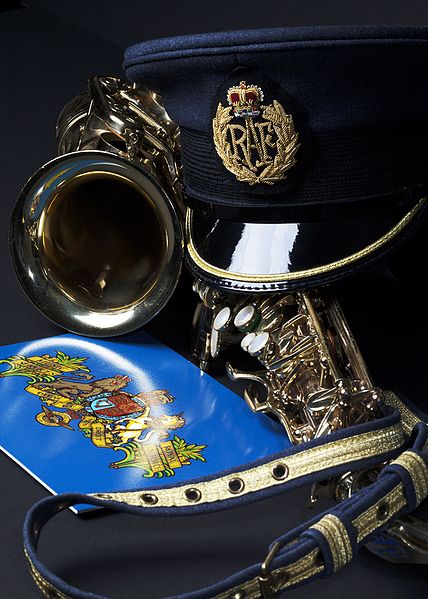A cap badge, also known as head badge or hat badge, is a badge worn on uniform headgear and distinguishes the wearer's nationality and/or organisation. The wearing of cap badges is a convention commonly found among military and police forces, as well as uniformed civilian groups such as the Boy Scouts, civil defence organisations, ambulance services, customs services, fire services etc.
Cap badge of the United States Navy on the left and cap badges of the French Navy (Marine Nationale) on the right.
British Army cap badges at Cliffe Castle Museum, Keighley. View at max resolution to read labels.
The cap badge of a senior RAF officer.
Cloth version of the cap badge of RAF other ranks. This version is worn on caps.
A heraldic badge, emblem, impresa, device, or personal device worn as a badge indicates allegiance to, or the property of, an individual, family or corporate body. Medieval forms are usually called a livery badge, and also a cognizance. They are para-heraldic, not necessarily using elements from the coat of arms of the person or family they represent, though many do, often taking the crest or supporters. Their use is more flexible than that of arms proper.
The Dunstable Swan Jewel, a livery badge from about 1400 AD, perhaps of Henry V as Prince of Wales. British Museum
The Château de Blois, with the porcupine of Louis XII
Imprese from Jacobus Typotius, Symbola Divina et Humana (Prague, 1601), engraved by Aegidius Sadeler II.
Salamander badge of King Francis I of France, with letter "F", Château de Chambord








